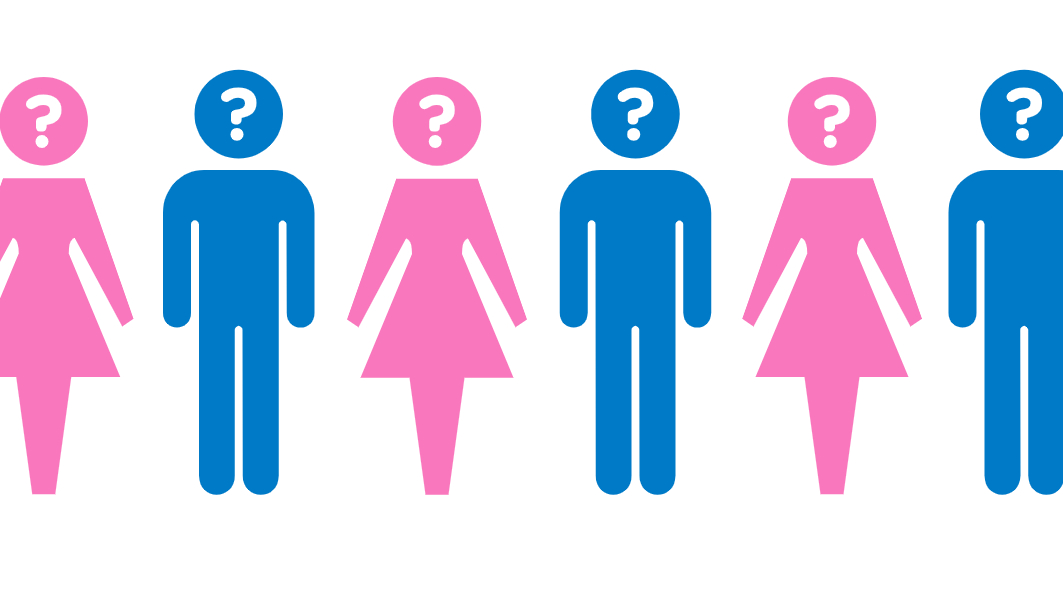If you think that sexual identity confusion seems to be rapidly increasing among children, adolescents and young adults, you’d be absolutely right. Several surveys indicate a large upsurge in youth who identify as transgender. A 2016 report in Pediatrics showed that 2.7% of teens in the 2016 Minnesota Student Survey identify as “transgender and gender nonconforming.” The U.S. Centers for Disease Control and Prevention, using data from the Youth Risk Behavior Surveillance System, found that 1.8% of the high school students they surveyed in 2017 identified as transgender.
According to the American Psychiatric Association’s Diagnostic and Statistical Manual of Mental Disorders (DSM-5), published just 6 years ago, the prevalence of gender dysphoria in the adult population ranges from 0.005% to 0.014% for men and from 0.002% to 0.003% for women. Compare that tiny percentage to those from recent teen surveys, and you see the scope of the increase.
In Britain, similar growth has occurred, as the number of youth referred for “gender treatment” grew from 97 in 2009-10 to 2,519 in 2017-18. The number of girls referred for such treatment increased from 40 to 1,806 during that time period. This was such a large rise, in less than a decade, that the U.K.’s Minister for Women and Equalities called for an inquiry.
As the number of youth who struggle with confusion about being male or female has grown, so has the number of clinics to treat them. Boston Children’s Hospital was the first U.S. treatment center for gender confused youth, opening in 2007. By 2015, there were 40 such clinics across the country. A recent study found a four-fold increase in transgender surgery in the U.S. from 2000 to 2014.
Currently, the most widely-used protocol for treating the disorder is called “gender affirming.” In this approach, medical providers agree with their patients’ “gender identity,” without even trying to understand why young people would reject their bodily, biological reality. These children are then given puberty-blocking medications, followed by opposite-sex hormones and surgeries.
There is little scientific evidence to support this treatment model. Dr. Paul McHugh, University Distinguished Professor of Psychiatry at the Johns Hopkins University School of Medicine, wrote in 2004 that “to provide a surgical alteration to the body of these unfortunate people was to collaborate with a mental disorder rather than to treat it.”
Thankfully, more medical professionals are beginning to question this agreement with sexual identity confusion. They are joining critics such as McHugh, who worked with other researchers to report on the experimental nature of this treatment on children, and doctors at the American College of Pediatricians (ACPeds) who have been vocal in opposing the transgender ideology and treatment recommendations.
In England, The Times of London recently published a series of articles about the National Health Service’s Tavistock Centre, the only gender clinic in the country treating children. In the past three years, at least 18 of its clinical staff have resigned, and the newspaper spoke with five clinicians who were involved in deciding which young people would be given puberty blockers.
One clinician said, “This experimental treatment is being done on not only children, but very vulnerable children.” They felt pressured to refer young people for treatment, and agreed that transgender activist groups were “promoting transition as a cure-all solution for confused adolescents.”
Dr. Carl Heneghan, Professor of Evidence-Based Medicine at the University of Oxford, also voiced his concerns about giving young children powerful drugs and opposite-sex hormones, “You would think, when it comes to children, the testing and evaluation of medicines would be robust — ensuring the utmost safety. Well, you’d be wrong.” He then went on to explain that these drugs are being used for “off-label purposes, “meaning their use is outside of what the drug was approved for.” He called this “an unregulated live experiment on children.”
Another who has studied and written about the issue is Dr. Monique Robles, MD, a pediatric critical care physician. She began questioning the rapid growth in gender-identity clinics treating children. She notes problems treating these children, beginning with the DSM-5, which has no objective, scientific measures for “gender dysphoria.” Instead, she writes, “Troublingly, the defining criteria are all subjective, based on a child’s preferences, desires, or dislikes.”
With concerns similar to those outlined by McHugh, the ACPeds, and clinicians in England, Robles explains that these treatments are not “fully reversible,” as proponents claim. She writes, “These hormone treatments arrest bone growth and decrease its density, prevent normal pubertal organization and maturation of the adolescent brain, and prevent sperm and egg development.” She describes serious health risks and the lack of evidence associated with current “gender-affirming” protocols.
Robles concludes by saying that treatment of this disorder should “address the underlying mental health issues and concerns that lead these children and adolescents to identify as transgender. …In this way, the body, mind, and soul can be brought together, as they were meant to be.” We strongly agree.






